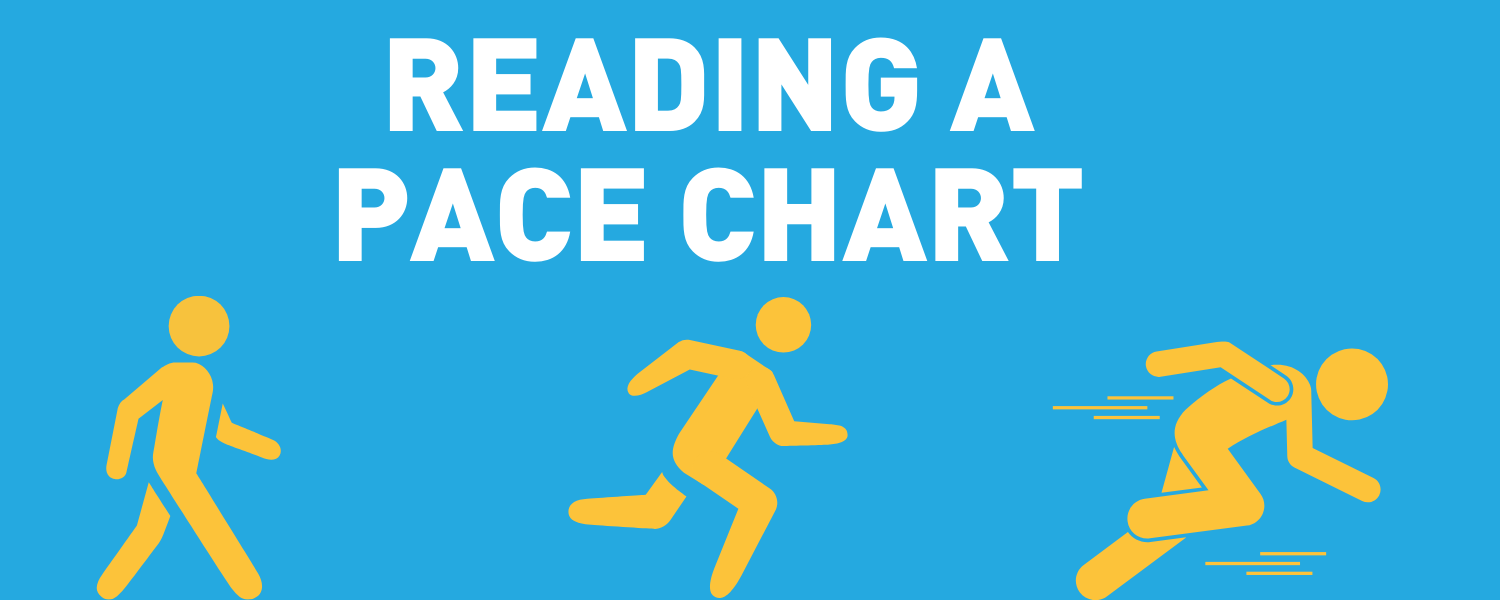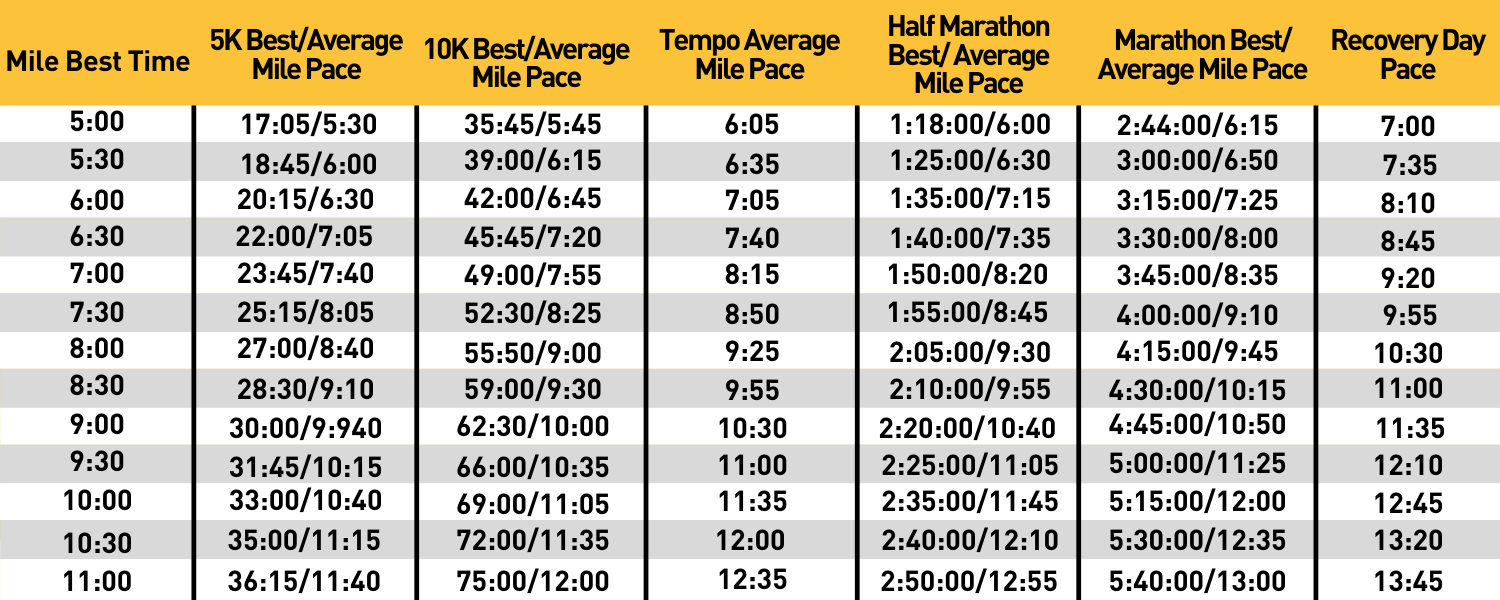


Reading A Pace Chart
For young and new runners, it is vital to become familiar with pace and running at and maintaining various speeds during your regimented training. As you become more familiar with pace, you will be able to recognize what your 5K pace is as compared to your 10K pace or distance of your choice.
As you train, your pace chart will be a great tool. Regardless of the prescribed distance that you are doing, this will help you train at the appropriate speed. For instance, if you run an 11:00 mile but run a 43:00 5K, you know that your endurance needs to be addressed. Therefore you can focus your training on maintaining pace, building endurance, and correcting any technique or mechanical breakdowns that occur the further into your runs that you get.
How to read a pace chart
Reading a pace chart begins with you finding the time that you ran any of the events listed on the chart: mile, 5K, 10K, half marathon, marathon. From there, you will find the pace at which you will be running for your workout. For example, if your best mile time was 9:30 and my training prescribes that I run 2 miles at my 5K pace, I will be running the 2 miles with the pace to finish each at around 10:15.



